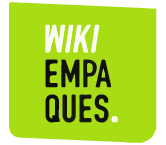UNITED STATES REGULATIONS

PUBLIC POLICY
SUMMARY
FOAM POLYSTYRENE BAN:
Various states in the U.S. and one territory have passed state legislation explicitly banning foam polystyrene. These states include:
Maryland: It was the first state to enact a ban in 2019, which came into effect in October 2020.
Maine and Vermont: Both approved bans in 2019, with laws coming into effect in July 2021.
New York: Passed a ban in 2020 that came into effect in January 2022.
New Jersey: Its ban came into effect in May 2022.
Colorado: Approved a ban that will come into effect in January 2024.
Virginia: Approved a ban that will come into effect for large companies in July 2028 and for small businesses in July 2030.
Washington: Approved a ban, effective from June 2023, with a ban on food service products starting June 2024.
Delaware, Oregon, and Rhode Island: All signed bans in 2023, with provisions coming into effect in 2025 in each state.
Washington D.C.: Banned polystyrene foam takeout containers from January 2016, and the ban was expanded on January 2021 to include the retail sale of polystyrene foam.
Hawaii: There is a de facto ban after each county, except the state-managed Kalawao County, enacted bans on foam polystyrene.
In addition to state bans, local bans have been enacted in many large and small municipalities within the U.S., including at least 128 cities in California and at least 65 municipalities in Massachusetts.
PLASTIC BAG BAN:
Several states in the United States have implemented state bans on single-use plastic bags. These bans vary in terms of scope and specifications, but are generally aimed at reducing plastic use and encouraging more sustainable practices. Some of the states that have enacted such legislation include:
Hawaii: Although it does not have a state-level ban, it effectively operates as one since all its most populous counties ban non-biodegradable plastic bags at the point of sale. Bans in the counties of Kauai, Maui, and Hawaii were implemented between 2011 and 2013, and Honolulu was the last major county to approve the ban in 2015.
New York: In 2019, New York became the third state to ban plastic bags with the approval of Senate Bill 1508. The law, which came into effect in March 2020, applies to most single-use plastic bags provided by supermarkets and other retailers.
Connecticut, Delaware, Maine, Oregon, and Vermont: These states also enacted legislation in 2019 that includes banning plastic bags. Vermont, in addition to plastic bags, also imposed restrictions on single-use straws and polystyrene containers.
California: Was the first state to pass comprehensive legislation covering both plastic reduction and recycling. The California law requires a 25% reduction in the use of single-use plastics by 2032 and a recycling target of 30% for plastic items sold or purchased in California by 2028.
